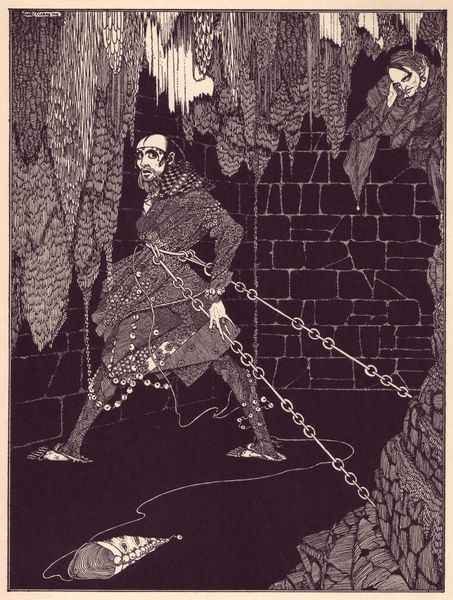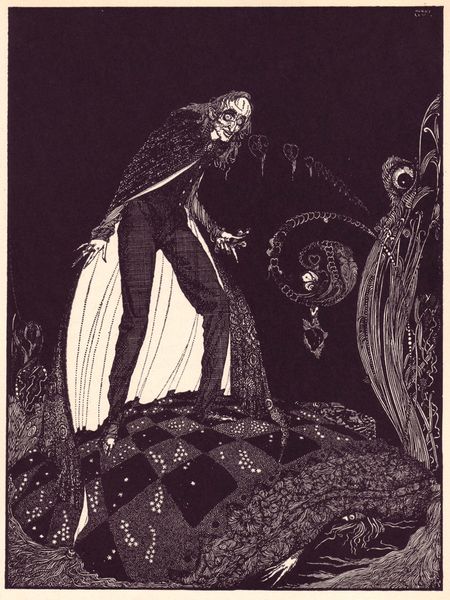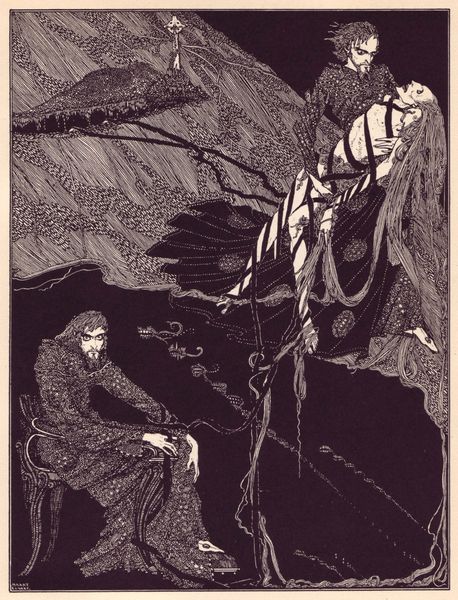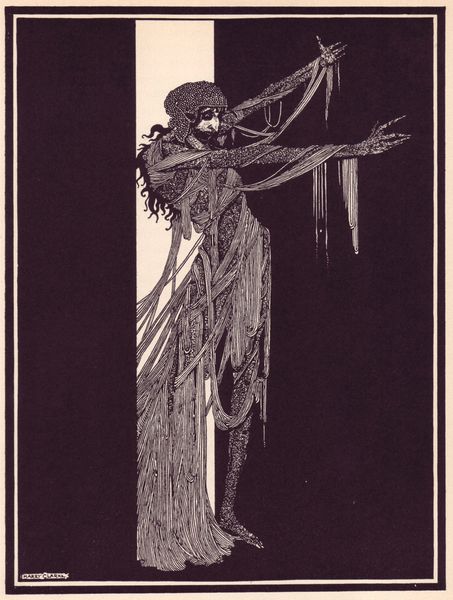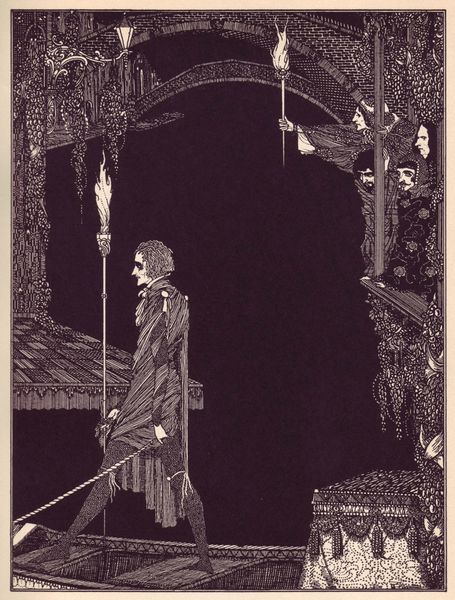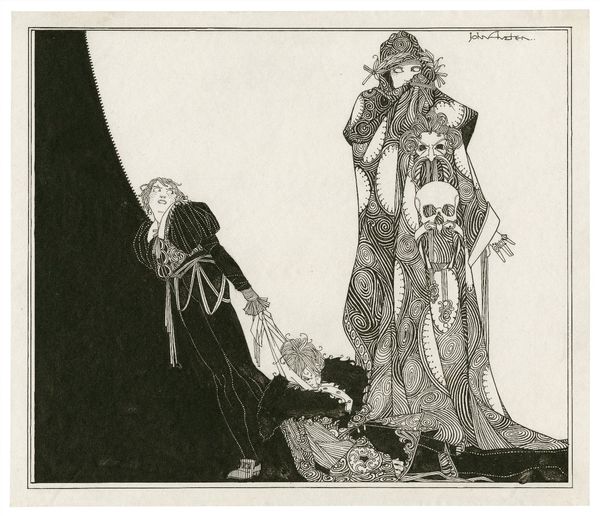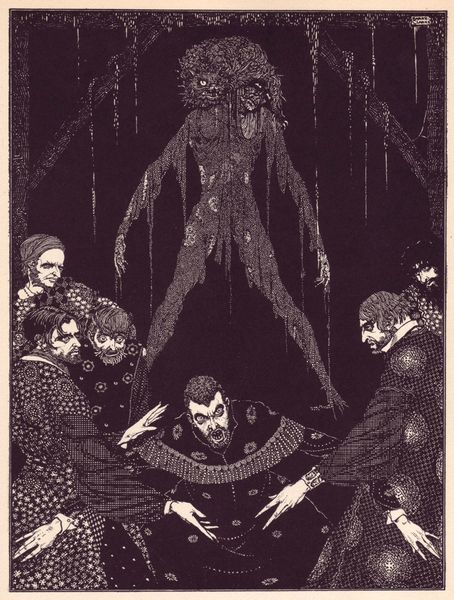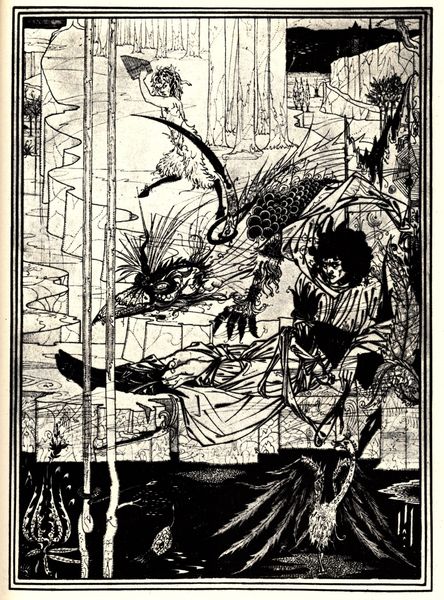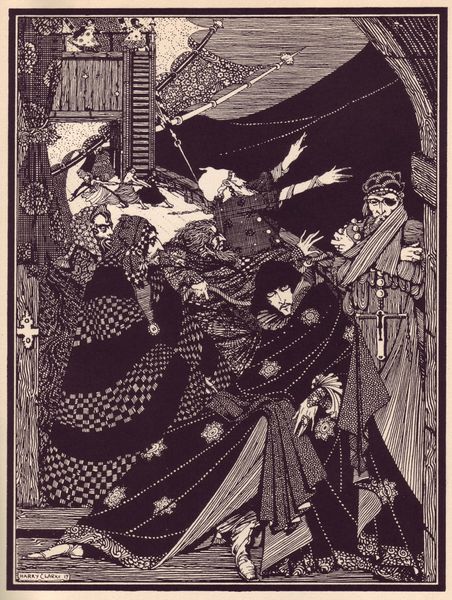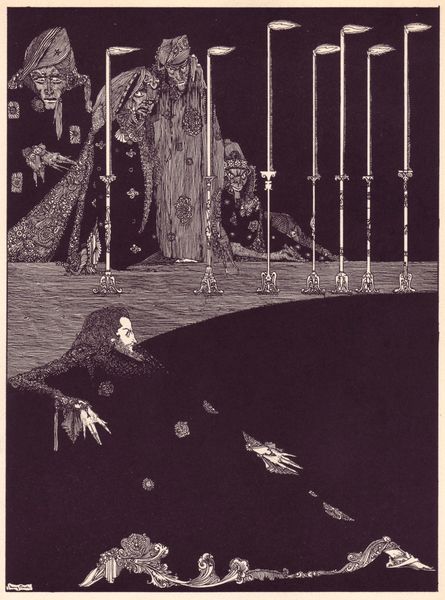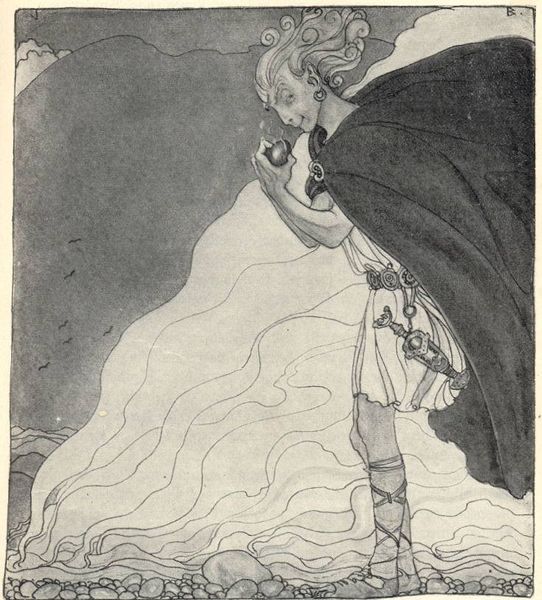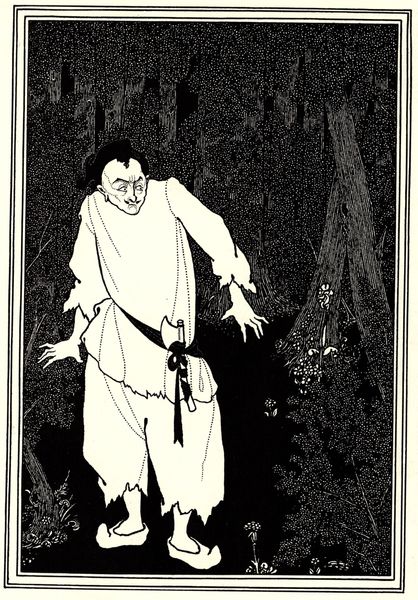
Copyright: Public domain
Curator: Welcome. We are looking at “Tales of Mystery and Imagination by Edgar Allan Poe,” a 1923 print by the Irish artist, Harry Clarke. Editor: Immediately, I’m struck by the oppressive darkness and elaborate detail; the rendering suggests a world of macabre fantasy, a claustrophobic descent into madness. Curator: The composition relies on stark contrasts—note how Clarke's use of line and pattern generates an unsettling visual rhythm that animates the flat picture plane. We might describe how his work reflects Art Nouveau principles, but deployed towards distinctly darker subject matter, even bordering on caricature. Editor: This isn't simply dark for darkness' sake, I think. Consider Poe's tales themselves: societal anxieties manifest in narratives of decay and psychological turmoil. Clarke's illustrative approach, heavy on line and shadow, amplifies that—perhaps reflecting the lingering traumas of the post-war period and a widespread cultural reckoning with mortality? This feels inherently political. Curator: It seems we find ourselves engaging a fundamental opposition here, the inherent qualities of Clarke's arrangement against your proposed socio-political lens. To further probe the materiality: we can read his method as a reaction to the excesses of Art Deco's bright geometry. He emphasizes detailed hand-rendering that allows symbolic, literary allusion. The subject isn't an allegorical beauty, it's a visualization of terror itself. Editor: Yes, but isn't that visualization tied to a historical context? The aestheticization of dread during times of upheaval can be read, reasonably, as a response to real anxieties. Perhaps by fixating on the formal elements alone, we risk neutering the subversive, and deeply psychological power, embedded in Clarke's narrative and, consequently, Poe’s words? Curator: But perhaps reducing visual language entirely to a social function limits what art *is* at its core. It functions both as aesthetic form *and* socio-political function. Editor: Precisely! And Harry Clarke’s work serves as such potent documentation, it deserves readings across a spectrum of experience.
Comments
No comments
Be the first to comment and join the conversation on the ultimate creative platform.
